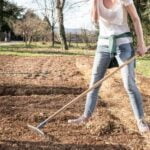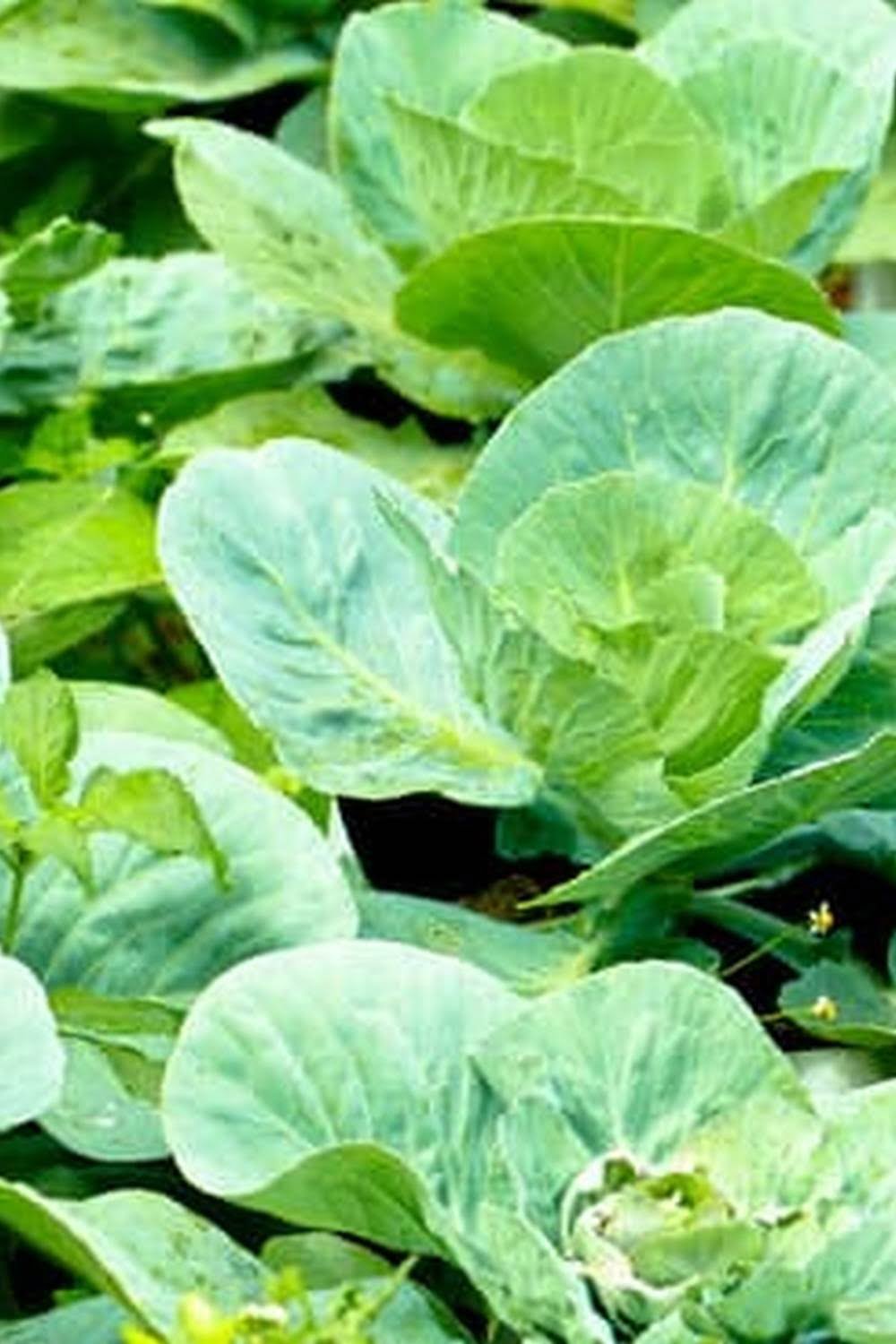How do you prepare the land for vegetable gardening? Proper land preparation is vital for the success of your vegetable garden. Whether you are a beginner or an experienced gardener, understanding the essential steps to prepare the land can make a significant impact on the health and productivity of your plants. In this article, we will explore the importance of proper land preparation and provide a comprehensive guide on how to set up your garden for optimal vegetable growth.
Assessing your land is the first step in preparing for vegetable gardening. Understanding the soil type and quality will help you determine what types of vegetables will thrive in your garden. Clearing the land from weeds, debris, and rocks is crucial to create a clean and healthy environment for your plants to grow. Once the land is cleared, soil testing and amendment are important steps to balance pH levels and add essential nutrients that may be lacking.
Tilling and loosening the soil is another critical aspect of land preparation. This process creates a healthy growing environment by improving soil structure and allowing better root penetration for vegetables. Creating garden beds and rows is also essential in planning out the layout for optimal plant growth.
Mulching and composting further enhance soil health and fertility to support robust vegetable growth. Proper irrigation and drainage are key factors in ensuring that your plants receive adequate water while preventing waterlogging, which can lead to root rot and other issues.
Assessing Your Land
Importance of Understanding Soil Type and Quality
Before you start planting your vegetable garden, it is crucial to understand the soil type and quality of your land. Different vegetables thrive in different types of soil, so knowing what you are working with will help you choose the right plants and improve soil conditions if necessary. Assessing your land will also give you insight into the fertility of the soil, its drainage capabilities, and its overall health.
Conducting a Soil Test
One way to assess your land is by conducting a soil test. You can purchase a DIY soil test kit or send a sample to a professional laboratory for analysis. The results will provide information about the pH levels of the soil, nutrient deficiencies, and organic matter content. Armed with this information, you can make informed decisions about which vegetables to grow and what amendments are needed to improve the soil quality.
Improving Soil Quality
Based on the results of your soil test, you may need to amend the soil to create optimal conditions for vegetable gardening. Adding organic matter such as compost, well-rotted manure, or peat moss can improve drainage, increase fertility, and promote beneficial microbial activity in the soil.
Additionally, adjusting pH levels with lime or sulfur as recommended by your soil test can create an environment where vegetables can thrive. Taking the time to understand and improve your land before planting will set the stage for a successful vegetable garden.
Clearing the Land
When preparing your land for vegetable gardening, it is crucial to start by clearing the area of any weeds, debris, and rocks. This initial step sets the stage for a successful gardening season by creating a clean and conducive environment for plant growth. Here are some key tasks to consider when clearing the land for your vegetable garden:
1. Identify and remove weeds: Before planting your vegetables, it is essential to eliminate any existing weeds from the area. Weeds compete with your crops for water, nutrients, and sunlight, so it’s important to thoroughly remove them to prevent stunted growth in your vegetables.
2. Clear away debris: Remove any dead plant material, fallen leaves, or other debris from the land. Decomposing organic matter can attract pests and disease, so it’s best to clear the area of any unnecessary debris before planting.
3. Address rocks and large obstructions: Take the time to clear the land of rocks and large obstructions that could impede root growth or interfere with planting efforts. By removing these obstacles, you create a more uniform and manageable surface for gardening.
By taking these steps to clear your land before planting your vegetable garden, you establish an ideal foundation for healthy plant growth and bountiful harvests. This initial effort will go a long way in creating a thriving and productive growing space for your vegetables.
Soil Testing and Amendment
Understanding Soil Testing
Before planting your vegetable garden, it’s important to understand the soil in which you will be growing your crops. Conducting a soil test is an essential step in preparing the land for vegetable gardening. Soil testing will help you determine the pH levels, nutrient content, and overall quality of the soil. This information is crucial in deciding what amendments are necessary to create optimal growing conditions for your vegetables.
Balancing pH Levels
One of the key factors in soil preparation is balancing pH levels. Most vegetables thrive in soil with a slightly acidic pH level, typically between 6.0 and 7.0.
If your soil test reveals that the pH level is too high (alkaline) or too low (acidic), it’s important to make the necessary adjustments by adding amendments like lime to raise pH or sulfur to lower pH. Balancing the pH levels of your soil will ensure that your vegetable plants are able to access the nutrients they need for healthy growth and development.
Adding Nutrients
In addition to balancing pH levels, it’s important to address any nutrient deficiencies in the soil. Based on your soil test results, you may need to add organic matter such as compost or well-rotted manure to improve nutrient levels in the soil.
You may also need to add specific fertilizers to provide essential nutrients like nitrogen, phosphorus, and potassium that are vital for healthy plant growth. By addressing nutrient deficiencies through proper amendment, you can create an environment that supports robust and productive vegetable plants.
Tilling and Loosening the Soil
Before tilling the soil, it’s important to assess its moisture content. Soil that is too wet should not be tilled as this can lead to the formation of clumps and negatively impact soil structure. The best time to till your soil is when it is moist but not overly damp. Additionally, consider using organic matter such as compost or well-rotted manure to improve the soil’s fertility before tilling.
When tilling the soil, it’s recommended to do so at a depth of around 6 to 8 inches for vegetable gardens. This depth allows plant roots to penetrate deeply while also ensuring that there is enough loose soil for proper water drainage and airflow. It’s also important to avoid over-tilling, as excessive disturbance of the soil can disrupt beneficial microorganisms and earthworms that contribute to its health.
| Aspect | Recommendation |
|---|---|
| Soil Moisture | Assess before tilling; avoid tilling if too wet |
| Tilling Depth | 6-8 inches deep for vegetable gardens |
| Best Time to Till | When moist but not overly damp |
Creating Garden Beds and Rows
When it comes to vegetable gardening, the layout of your garden beds and rows plays a crucial role in ensuring optimal plant growth. The proper planning and design of your garden beds will not only maximize space but also facilitate maintenance and harvesting. One important consideration when creating garden beds and rows is the spacing between plants to allow for adequate airflow, sunlight exposure, and ease of access for watering and weeding.
The first step in creating garden beds is to decide on the size and shape of the beds based on the available space and the types of vegetables you intend to grow. Raised beds are a popular choice as they provide good drainage, improve soil warmth, and prevent soil compaction. Additionally, raised beds make it easier to control weeds and pests.
In addition to the layout of your garden beds, the orientation and arrangement of your planting rows can significantly impact plant growth. It’s essential to consider factors such as sunlight exposure, prevailing wind direction, and water availability when planning the layout of your rows. Proper spacing between rows is crucial for promoting healthy plant growth by preventing overcrowding, allowing for sufficient air circulation, and making it easier to tend to your plants.
| Aspect | Description |
|---|---|
| Garden Bed Size | Consider available space and types of vegetables |
| Raised Beds | Benefits include good drainage, improved soil warmth, and weed control |
| Row Spacing | Proper spacing allows for sufficient airflow, sunlight exposure, and easier maintenance |
Mulching and Composting
Mulching is the practice of covering the soil surface with a layer of organic material such as straw, leaves, grass clippings, or wood chips. This helps to retain moisture in the soil by reducing evaporation, suppresses weed growth, moderates soil temperature, and prevents erosion.
In addition, mulch gradually decomposes over time, enriching the soil with essential nutrients and improving its overall fertility. When applying mulch to vegetable gardens, it is important to spread a layer approximately 2-4 inches thick around each plant while being careful not to pile it directly against stems or trunks to avoid rotting.
Composting involves the decomposition of organic matter such as kitchen waste, yard trimmings, and other biodegradable materials to create nutrient-rich compost. This can be added to garden beds or mixed into the soil before planting vegetables. Compost provides a slow-release source of nutrients for plants while enhancing soil structure and promoting beneficial microorganism activity.
To create compost, gardeners can use a variety of methods including traditional compost bins, tumblers, or simple pile systems. It is important to regularly turn and aerate the compost pile to facilitate decomposition and produce high-quality finished compost for use in vegetable gardening.
Irrigation and Drainage
Proper irrigation and drainage are crucial components of preparing the land for vegetable gardening. Without the right amount of water, plants can suffer from dehydration, while excessive water can lead to waterlogging, causing root rot and other issues. To ensure the success of your vegetable garden, it’s important to focus on implementing effective irrigation and drainage systems.
One way to ensure proper watering is by installing a drip irrigation system, which delivers water directly to the base of plants, reducing water waste and minimizing the risk of diseases caused by wet foliage. Another option is a soaker hose, which emits water along its length, ensuring that the soil around plants’ roots is consistently moist without saturating the entire garden bed.
To prevent waterlogging, it’s essential to assess the natural drainage patterns of your land. If your soil tends to hold onto excess water, creating raised garden beds can help improve drainage and prevent water from accumulating around plant roots. Additionally, incorporating organic matter such as compost into the soil can improve its structure, allowing for better drainage.
Conclusion
In conclusion, the proper preparation of land for vegetable gardening is crucial to the success of your garden. By understanding the soil type and quality of your land, clearing out debris and rocks, testing and amending the soil, tilling and loosening the soil, planning a layout for optimal plant growth, enhancing soil health and fertility through mulching and composting, and ensuring proper irrigation and drainage, you set your vegetable garden up for success.
A well-prepared land provides a healthy growing environment for your vegetables, allowing them to thrive and produce abundant yields. It also reduces the risk of diseases and pests, as well as promotes better water absorption by the plants. Additionally, it saves you time and effort in maintenance as it minimizes weed growth and prevents waterlogging. Overall, a well-prepared land sets the foundation for a productive and bountiful vegetable garden.
So before you start planting your vegetables, make sure to invest time in preparing your land properly. A little effort at the beginning will go a long way in ensuring the success of your vegetable garden throughout the growing season. With proper land preparation, you are on your way to enjoying a fruitful harvest of fresh and healthy vegetables right from your own backyard.
Frequently Asked Questions
How Do I Prepare My Soil for a Vegetable Garden?
To prepare your soil for a vegetable garden, start by testing the soil to determine its pH levels and nutrient content. Then, remove any weeds or debris from the area and loosen the soil with a tiller or garden fork.
Next, add organic matter such as compost or manure to improve the soil structure and fertility. Finally, consider adding specific fertilizers or amendments based on the needs of the vegetables you plan to grow.
What Are the 5 Steps in Preparing the Land?
The 5 steps in preparing the land for a vegetable garden include: clearing the site of any debris or weeds, testing the soil to determine its pH levels and nutrient content, loosening the soil with a tiller or garden fork, adding organic matter such as compost or manure to improve soil fertility and structure, and finally incorporating specific fertilizers or amendments based on the needs of the vegetables you plan to grow.
How Do You Turn Bad Soil Into Good Soil?
Bad soil can be turned into good soil by addressing its specific issues. If it lacks nutrients, adding organic matter like compost or manure can help enrich and improve its fertility.
If it has poor drainage, incorporating coarse materials like sand or perlite can help improve its texture. Regularly testing and amending the soil to address its deficiencies is key in transforming bad soil into good soil for healthy plant growth.

If you’re looking to get into vegetable gardening, or are just looking for some tips on how to make your current garden better, then you’ve come to the right place! My name is Ethel and I have been gardening for years. In this blog, I’m going to share with you some of my best tips on how to create a successful vegetable garden.





